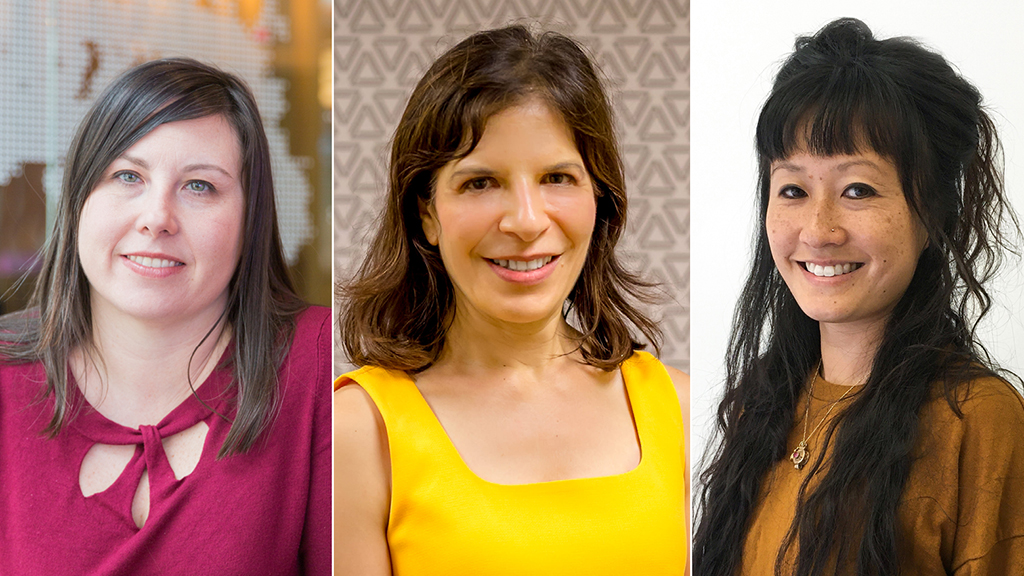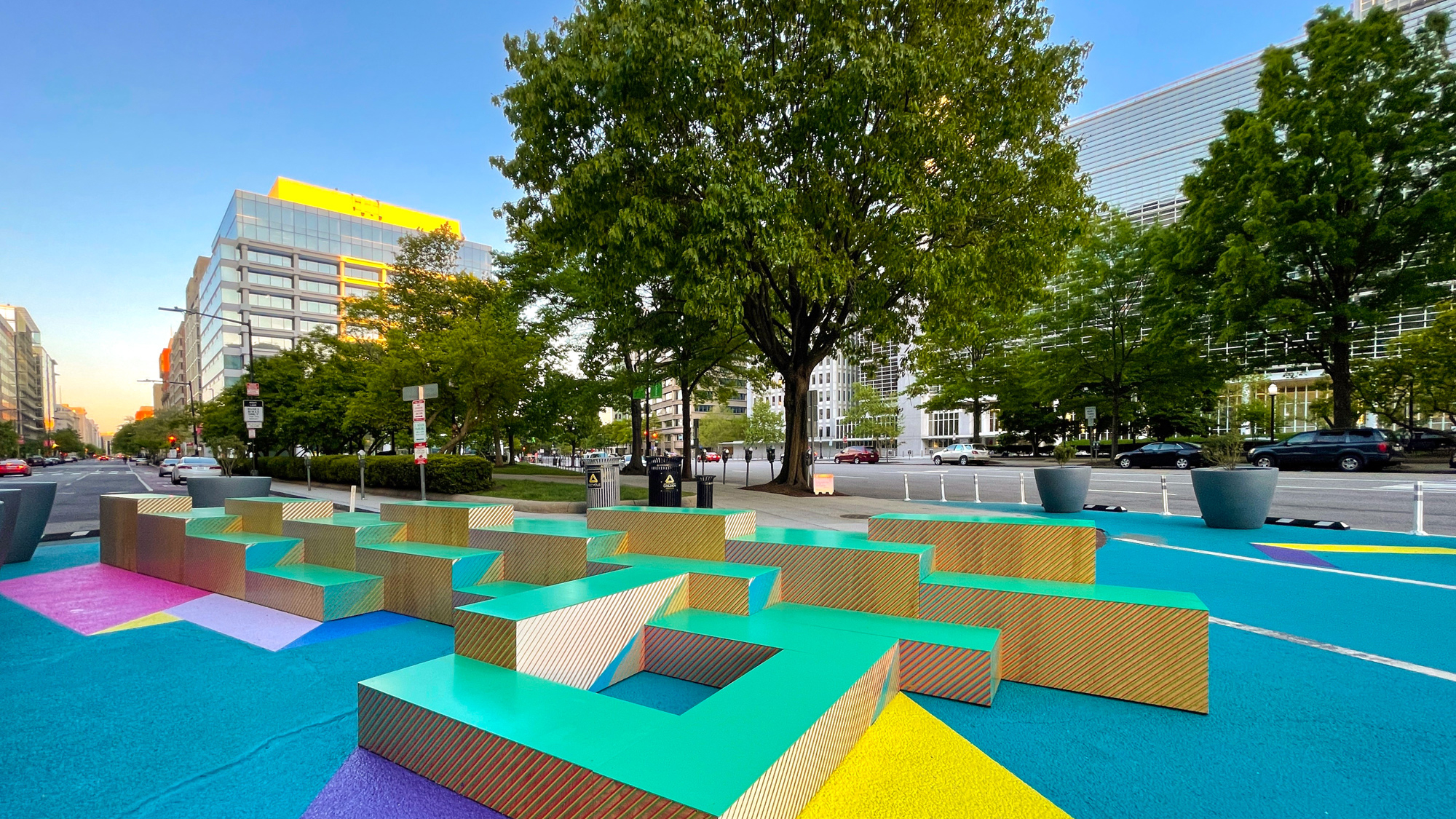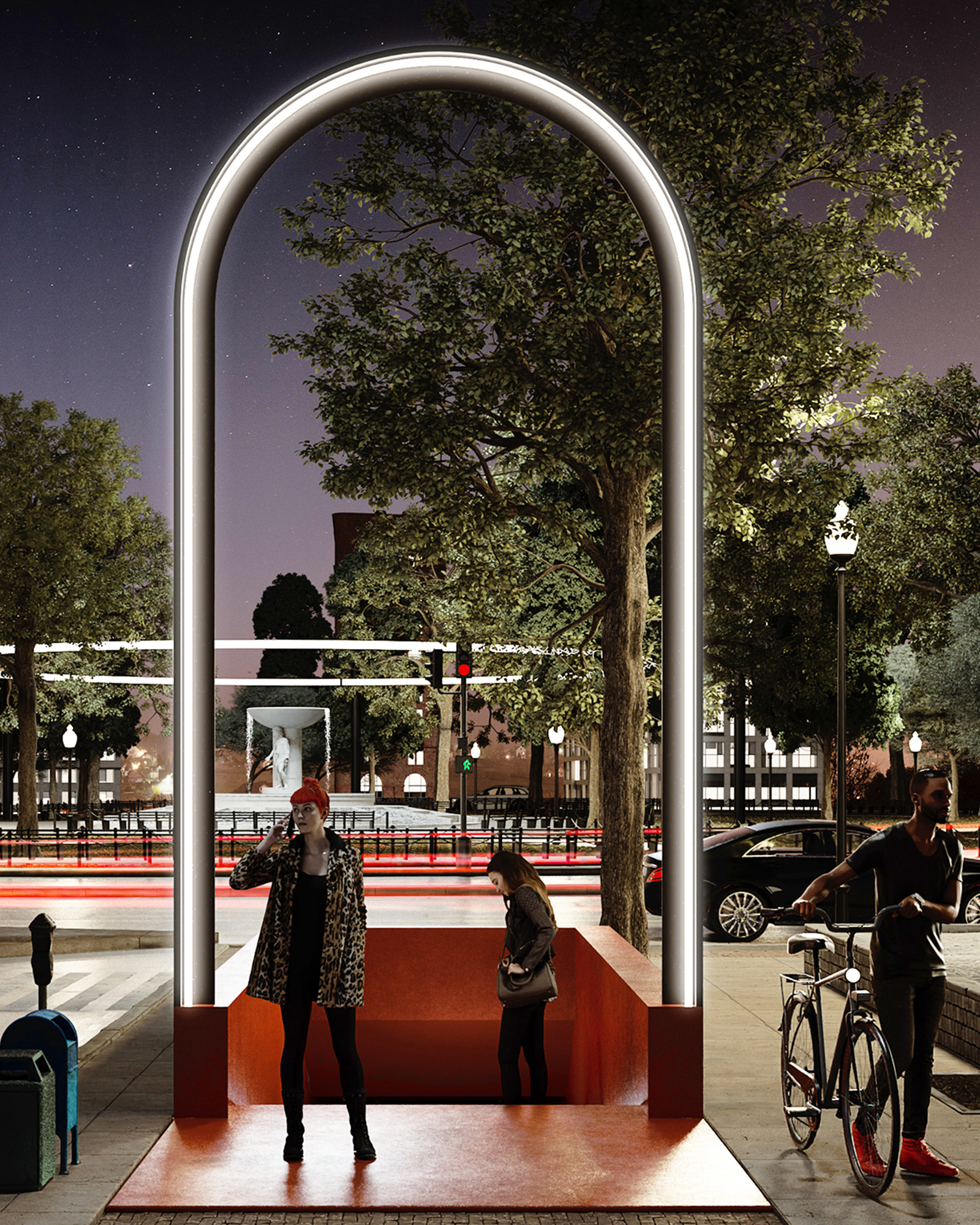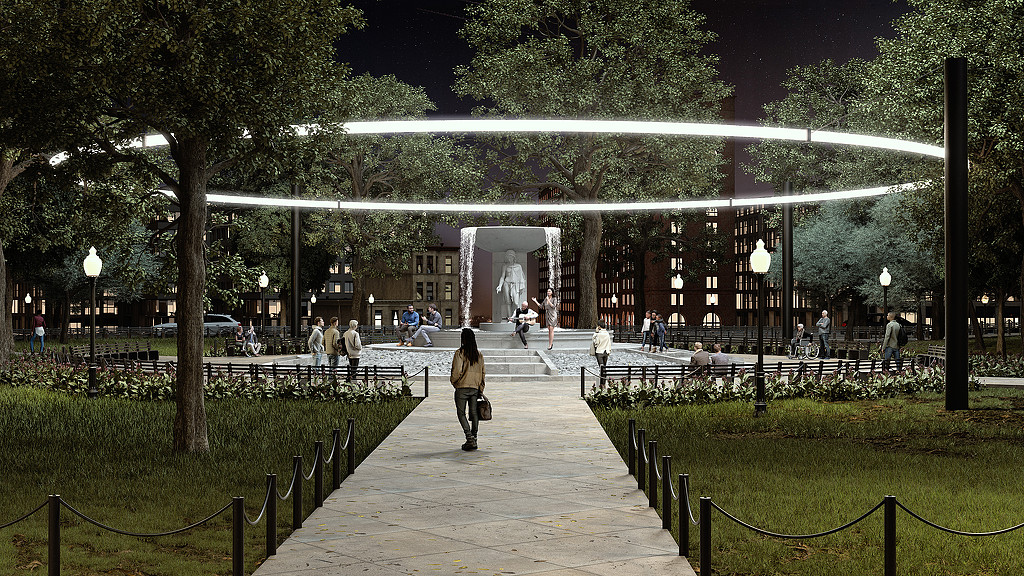Transforming Our Streets and the Public Realm Through Art and Programming
May 20, 2021
Editor's note: this podcast episode originally appeared on the Gensler Design Exchange podcast.
In 2020, we saw public space and art bring local and global communities together in new ways. Throughout the pandemic, people searched out places to stroll with family and friends, exercise, bike and jog safely, or to simply sit and spend time to clear the mind from the cognitive load of their computer screens and video conferences. As people are seeking places for reconnection, our public plazas, sidewalks, and parks are more important than ever.
While it is difficult to quantify the advantages of well-designed public spaces, the intangible benefits these spaces can have for people are hard to ignore. Our mental and physical health is inextricably linked to the connections between ourselves and the natural world, as well as social connections between individuals. In order to create more inclusive and resilient communities, we need to reimagine the public realm as a place that is focused on the people who occupy it.
In a recent Gensler Design Exchange podcast episode, Carolyn Sponza, principal and studio director at Gensler, speaks with Leona Agouridis, executive director of the Golden Triangle Business Improvement District (BID), and Cheryl Wing-Zi Wong, a New York-based artist, to explore the connections between art and architecture, current demands for space activation, and how we might reimagine our streets and the public realm to steward more equitable and sustainable districts.

The Gensler Research Institute’s 2020 City Pulse Survey found that COVID-19 pandemic is straining people’s relationships with their cities, and Central Business Districts (CBDs) have been particularly impacted. According to Gensler’s 2020 Workplace Survey, more than half of U.S. workers would prefer a hybrid work model in which they are in the office for a portion of the work week and working remotely for the balance of time. This means fewer daily commuters and lower weekday population densities, even after workers return to the office. But it also creates an opportunity to reshape more interesting and dynamic downtowns.
In many ways, the pandemic is accelerating trends that had already begun to subtly transform our CBDs with a greater mix of uses, more focus on experience and destination, and more responsiveness to evolving work patterns and mobility. We can use this moment to imagine a new model for growth — one that is more inclusive, resilient, sustainable, and healthy.
Public art programs, such as temporary installations of artwork, can encourage greater spatial awareness by challenging people to look at their environments in new ways and offering opportunities for cultural engagement. Installing public art can also create visual cultural amenities in the public realm. The Golden Triangle Business Improvement District (BID) puts these ideas into action through their Social Spaces initiative, which aims to bring people together safely during this time through intentionally designed temporary public space activations along Pennsylvania Avenue that create dialogue and celebrate culture. In partnership with the D.C. Department of Transportation (DDOT) and other partners, the sprawling avenue will be transformed over the next several years through this program.

Two large-scale public art installations transform the streetscape by creating intimate, human-scaled gathering spaces. One of which — MERIDIAN by Cheryl Wing-Zi Wong in The Penn Ave Pocket Park — aims to create a community site for sitting, reading, and socializing outdoors. MERIDIAN features a terraced pavilion and a floor mural that draws inspiration from the celestial meridians, or the circular pathways, that run along the Earth from pole to pole. The colored patterns on the wood surfaces correspond to shadows that will be cast on these faces at solar noon on the first day of the year’s upcoming seasons: summer solstice, autumn equinox, and winter solstice. The installation encourages interaction between people, as well as moments of pause and reflection that create an awareness of time.
Adding amenities and programmed activities to spaces attracts more people (and a variety of people) to spend time beyond simply moving through a space to reach a destination. These “sticky spaces” create rich and vibrant environments for people to enjoy and interact with each other, while also increasing opportunities to meet different people which can ultimately enhance social tolerance and learning.
It’s important to fuse our downtowns to their wider locality and commit to a more inclusive public realm to build connections at multiple scales. CBDs can create community-facing amenities to foster a sense of belonging for the local population and create more walkable and active environments. These amenities can form a third place — a vibrant space in between home and work.

Gensler’s ongoing work at Dupont Circle brings these ideas together. This iconic park has been a place of belonging for a diverse community for decades, though during the pandemic it has become less connected, safe, and civic-minded. In this context, Gensler recently won an international design competition to rethink the park to accommodate stronger, more cohesive connections to the subterranean arts space below. Our proposal, Illume Dupont, imagines a series of built interventions around the circle that use light as a unifying element, linking Dupont Underground with the community, the natural and built forms of the historic circle, and the fabric of the larger city.
Our city streets and sidewalks are our most extensive, interconnected network of public open space in our cities. Their size and reach give them the potential to not only enhance the lives of the people who inhabit them, but also to help our cities become more resilient. Our streetscapes should be seen as an essential part of a city’s success.
When a city’s populace and leaders view abundant and well-designed park spaces, public plazas, and streetscapes as integral as other infrastructure to creating a livable community, it benefits the health and well-being of everyone. A key to creating successful places like these within our cities and towns will be to keep advocating for the types of space we have always enjoyed being part of and have helped us stay connected through the pandemic.
For media inquiries, email .
